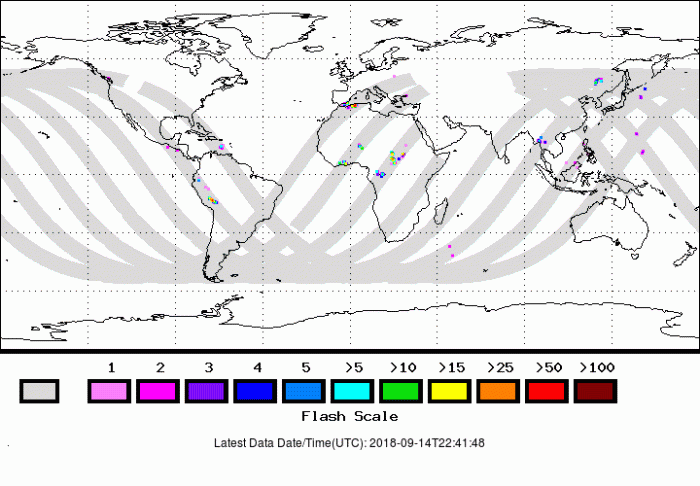The Lightning Imaging Sensor (LIS), is a space-based instrument used to detect the distribution and variability of total lightning (cloud-to-cloud, intra-cloud, and cloud-to-ground lightning). It measures the amount, rate, and radiant energy of lightning during both day and night. Two LIS instruments were built in the 1990s, one for the Tropical Rainfall Measurement Mission (TRMM) and a spare which was stored on a shelf for over 20 years. A summary of the two platforms highlights the differences. The TRMM LIS operated successfully for over 17 years, from launch in 1997 until April 2015. The spare LIS was placed in Feb 2017 on the International Space Station (ISS) for a two - four year mission.
The position of LIS on the ISS allows for latitudinal measurement extending poleward up to 54°. The goals of LIS on the ISS are to determine the relationship between clouds, lightning, and precipitation, to extend the global lightning climatology record, to examine the physics of lightning discharge, to examine the uses of lightning for improving severe weather warnings, and to estimate lightning nitrogen oxides to improve air-quality modeling.
The image (suggest zooming in for web site) indicates that over 5 lightning flashes every 90 seconds, averaged over the 4km-at-nadir resolution of the dataset for the preceding 12 hours, was recorded by LIS in the vicinity of Hurricane Florence on September 14, 2018.
Learn more about LIS: https://lightning.nsstc.nasa.gov/



